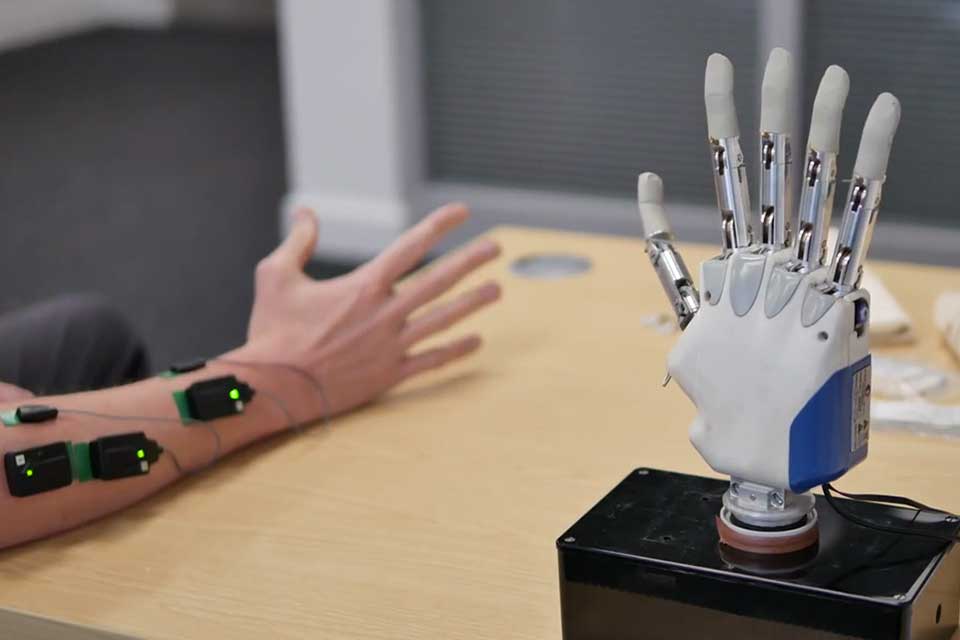Enabling a child who is physically disabled to participate in a sport they love is the quickest way to restore their damaged self-esteem. For a child who has either lost a leg or who was born without one, running may be the key to such restoration. Since insurance only covers what is required for ambulation, it is up to the parents or other private sources to provide the adaptive equipment necessary for a child to have an opportunity to run.
Children become amputees through birth defects, cancer or accidents. The U.S. CDC estimates that 1 in every 2,100 babies born in the U.S. annually are born with a congenital limb difference. Usually, a “clean up” amputation is needed for comfort and to create a strong stump on which a prosthetic can be fitted. Annually, about 1,000 new cases of osteosarcoma are diagnosed in the United States, and about 200 children and teens are diagnosed with Ewings sarcoma in the U.S. each year. Typically, both of these bone cancers result in amputation or rotationplasty. From 1990 to 2002, 111,600 children with traumatic amputations were treated in U.S. emergency departments—an average of 9,300 per year.
Once an amputee, the child has many internal and external factors conspiring to diminish their self-esteem. Naturally, they are self-conscious about their missing limb. One of the main purposes of a walking prosthesis is social: to make them look and feel “normal.” But they are surrounded by what they can’t do sometimes said out loud by insensitive people. An intolerance for difference in some people pushes the child away more, further isolating them. So does staring.
When wearing the prosthetic, they will find it has limitations. When not wearing it, they will feel the clumsiness of crutches. Many take to hopping whenever possible, but one’s biological knee was not designed for sustained hopping. All of this wears the child down, making them feel bad about themselves, leading to further loss of self-esteem. Loss of self-esteem is dangerous, especially in a child. Gloria Steinem famously said, “Self-esteem isn't everything; it's just that there's nothing without it.”
Sport, particularly running, is something of an elixir in its ability to restore self-esteem. If the child is enabled for a sport, it is something where focus and effort always work to steadily improve. Each little victory starts to give back self-confidence, which encourages them to keep going and keep getting better. Now, the physical difference, previously used as a weapon, starts to be something to be marveled at and to become proud of. Even the staring that made them feel bad before now makes them feel appreciated—and proud. As a result, self-esteem starts to recover.
The enabling technology behind a prosthesis that can do this is truly impressive and has only appeared in the last 20 years. The most important component is the blade foot. The blade is a spring modeled after the hind leg of a cheetah. As the runner lands on the blade, it compresses and stores potential energy, and then, as the runner’s body passes over the blade, it rebounds to push the runner forward, returning 90% of the energy generated from the initial compression.
Running prostheses use polycentric knees that have as many as seven pivot points. These extra axes of rotation allow the knee to bend with a more anatomically correct gliding motion. But it is very robust and can take quite a beating—many such devices have been used by elite athletes running in marathons. This is a purely mechanical device, unlike the computer-controlled knees on modern walking legs, which means if you land on it when it is not fully extended, it will collapse, and you will fall. Such a fall occurring while running at full speed can be quite dangerous. This is why substantial training and practice are required to master a running prosthesis.
The final element of the running prosthesis is the socket. All prosthetic legs are held on with suction, which means fit must be precise. Once a casting of the stump is done, a custom-fitted socket can be created. It is a hard plastic outer shell with a smooth, soft inner layer. A latex liner is rolled onto the stump, providing cushioning and non-slip contact between the skin and the socket. These sockets are handmade by a prosthetist who then fits them to the polycentric knee and the blade foot. There are only two companies worldwide that provide these running knees and blades: Össur in Iceland and Ottobock in Germany.
As delivered, an above-knee running prosthesis costs about $21,000. At my foundation, we were able to help a young girl who was born without a right tibia. An early childhood clean-up amputation made her an above-knee amputee. She was a hopper and did not know any different until she began to not be included in gym class activities. For the first time in her young life, she was being left out, feeling bad and wanting to run.
She was fitted for a running leg, and once her leg was finalized and ready, she swapped out her walking leg and donned her new running leg. She was encouraged to start carefully in the parallel bars, but she would have none of that and proceeded to take off running. She had never in her life run before. In minutes, she was ready to go outside and ran up and down the sidewalk like a pro.
Jothy Rosenberg, Ph.D. Founder & Chairman, Dover Microsystems, Inc. Founder, The Who Says I Can't Foundation.














